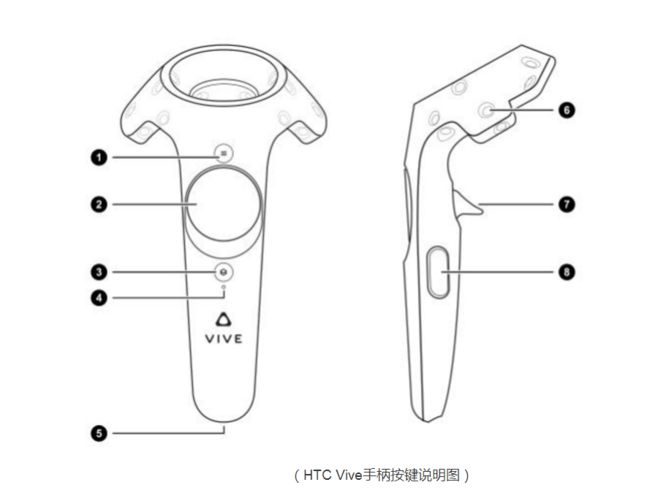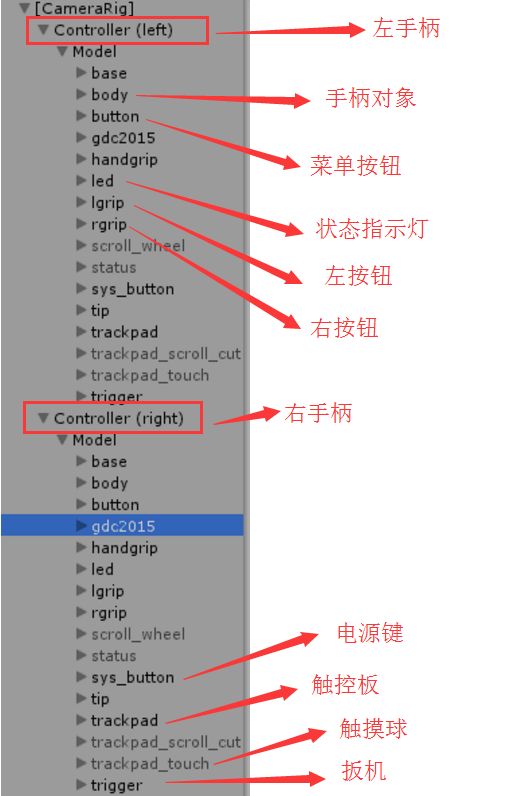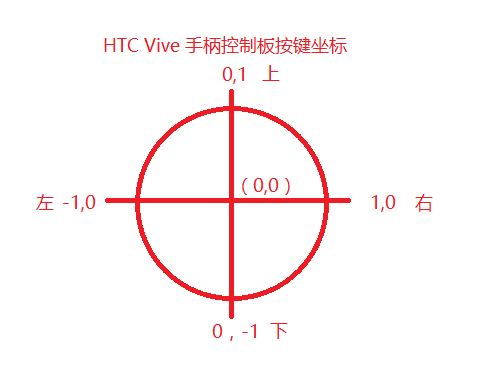- 如何实现聊天模型响应流式处理
yunwu12777
langchain
在现代人工智能应用中,流式处理聊天模型的响应成为一种常见需求,特别是在需要实时输出或大规模处理时。本文将详细介绍如何在Python中实现聊天模型的同步和异步流式处理,使用langchain库中提供的ChatAnthropic模型作为示例。技术背景介绍流式处理是指从模型逐步获取输出,而不是等待整个输出完成。这对于处理长文本生成或需要动态响应的应用场景特别有用。langchain库中的聊天模型实现了R
- 本地运行大型语言模型(LLM)的实践指南
yunwu12777
语言模型人工智能自然语言处理
技术背景介绍近年来,项目如llama.cpp、Ollama、GPT4All等的流行标志着在本地设备上运行大型语言模型(LLM)的需求日益增长。选择在本地运行LLM,至少有两个重要的好处:隐私和成本。隐私上,数据不需要发送到第三方,避免了商业服务条款的限制;成本方面,无需支付推理费用,尤其是对于那些需要大量计算的应用,如长时间的模拟和总结。核心原理解析在本地运行LLM,需要准备以下几个条件:开源LL
- 解锁UV工具新玩法:让Python脚本运行更高效的实用技巧
marao
pythonuv深度学习开发语言人工智能
作为Python开发者,你是否经常被依赖安装的漫长等待、虚拟环境的繁琐管理,或是脚本分享时“环境不一致”的问题困扰?近年来,一款名为UV的工具悄然兴起,它不仅以极速安装依赖著称,更通过一系列创新设计重构了Python脚本的运行逻辑。本文主要介绍UV的三大实用技巧,从“依赖即代码”到“动态环境隔离”,体验真正“即写即跑”的高效开发模式。1.极速启动:1秒搞定依赖安装,告别虚拟环境烦恼传统Python
- 银行家算法
后会无期77
算法算法
文章目录银行家算法概述银行贷款案例A再次申请50万,能批准吗?B再次申请40万,能批准吗?或者C申请20万,能批准吗?安全序列和不安全序列多维度资源分配操作系统资源分配银行家算法总结数据结构银行家算法的步骤安全性算法步骤死锁的避免银行家算法概述银行家算法(Banker’sAlgorithm)是一个避免死锁(Deadlock)的著名算法,是由艾兹格·迪杰斯特拉在1965年为T.H.E系统设计的一种避
- 【用户权限】超级用户(二)
超级用户Linux系统中的root账号通常用于系统的维护和管理,对操作系统的所有资源具有所有访问权限在大多数版本的Linux中,都不推荐直接使用root账号登录系统在Linux安装的过程中,系统会自动创建一个用户账号,而这个默认的用户就称为“标准用户”sudosu是substituteuser的缩写,表示使用另一个用户的身份sudo命令用来以其他身份来执行命令,预设的身份为root用户使用sudo
- python中解决Chrome中文字体显示为方框的问题
张苹果博客
pythonchrome开发语言
当您在CentOS或RHEL系统上处理中文内容时,可能会遇到字体显示为方框或乱码的情况。这是因为系统默认没有安装中文字体包。本指南将详细介绍如何正确安装和配置中文字体。原文地址:python中解决Chrome中文字体显示为方框的问题-张苹果博客字体显示问题示例如下:在CentOS/RHEL上安装中文字体的正确方法1.使用yum安装中文字体#安装文泉驿中文字体sudoyuminstall-ywqy-
- ZooKeeper深度面试指南二
搬砖的小熊猫
zookeeper面试分布式
一、Chroot特性:多租户隔离的命名空间功能原理Chroot(ChangeRoot)是ZooKeeper3.2.0引入的关键特性,允许客户端将操作限制在指定子树下。客户端连接时通过路径后缀(如127.0.0.1:2181/app1)设置命名空间,所有操作(如创建节点/config)实际映射为/app1/config,实现物理集群内的逻辑隔离。应用场景多应用共享集群:不同业务(支付/订单)共用Zo
- CPO-CNN-GRU-Attention、CNN-GRU-Attention、CPO-CNN-GRU、CNN-GRU四模型多变量时序预测对比
Matlab科研辅导帮
cnngru人工智能
✅作者简介:热爱科研的Matlab仿真开发者,擅长数据处理、建模仿真、程序设计、完整代码获取、论文复现及科研仿真。个人主页:Matlab科研工作室个人信条:格物致知,求助可私信。内容介绍多变量时序预测在诸多领域扮演着至关重要的角色,例如金融、气象和工业控制等。近年来,深度学习方法在时序预测任务中取得了显著的进展。本文旨在系统地比较四种基于卷积神经网络(CNN)和循环神经网络(GRU)的不同架构,包
- 【STM32】USART串口协议&串口外设
对error说不
stm32嵌入式硬件单片机
✅作者简介:热爱科研的嵌入式开发者,修心和技术同步精进❤欢迎关注我的知乎:对error视而不见代码获取、问题探讨及文章转载可私信。☁愿你的生命中有够多的云翳,来造就一个美丽的黄昏。获取更多嵌入式资料可点击链接进群领取,谢谢支持!点击领取更多详细资料一、引言在嵌入式系统开发里,设备间的通信是关键环节。串口通信由于其实现简单、成本低廉等特性,被广泛应用于各类设备之间的数据传输。STM32系列微控制器具
- Python包管理新纪元:极速工具 uv 完全指南(2025最新版)
coder_风逝
Python数据挖掘分析pythonuv开发语言
作为Python开发者,你是否还在忍受pip缓慢的依赖解析速度?是否厌倦了在virtualenv、pip-tools和poetry之间来回切换?今天我要向大家介绍一款革命性的工具—uv,它将彻底改变你的Python开发体验!一、uv是什么?uv是由打造了Ruff(Python超速Linter)的Astral团队开发的全新Python包管理工具,基于Rust编写,旨在成为"Python界的Cargo
- 【Java从入门到放弃 之 通用容器类】
ThetaarSofVenice
#Java从入门到放弃javapython开发语言
通用容器类通用容器类Collection接口Collection接口源码Collection接口概述List接口List接口源码List接口概述Set接口Set接口源码Set接口概述Queue接口Queue源码Queue概述Map接口Map接口源码总结通用容器类Java提供了一组丰富的通用容器类(也称为集合框架,CollectionsFramework),用于存储和管理一组对象。这些容器类提供了灵
- 【Java从入门到放弃 之 ConcurrentModificationException】
ThetaarSofVenice
#Java从入门到放弃java开发语言
ConcurrentModificationExceptionConcurrentModificationException探索ConcurrentModificationException解决问题总结ConcurrentModificationExceptionConcurrentModificationException是Java中的一种运行时异常,通常发生在使用迭代器遍历集合(如ArrayL
- Promise源码解析
天涯学馆
Web大前端全栈架构前端javascript开发语言
Promise核心原理Promise状态管理机制Promise的核心在于其三种不可变状态的管理:pending(等待态):初始状态,既不是成功也不是失败fulfilled(成功态):操作成功完成rejected(失败态):操作失败状态转换规则:pending→fulfilled(只能转换一次)pending→rejected(只能转换一次)fulfilled/rejected状态不可再改变//简化
- 构建私有视觉搜索应用:多模态大模型的应用实例
2301_80727036
自然语言处理
在当今的科技时代,视觉搜索功能已经不再是新鲜事物,许多智能手机用户都可以通过自然语言搜索照片。随着开源多模态大型语言模型(Multi-modalLLMs)的兴起,我们现在可以为自己构建这种视觉搜索应用,用于管理自己的私人照片收藏。本教程将向您展示如何通过代码示例,使用开源多模态LLM构建私有视觉搜索和问答系统。技术背景介绍多模态大模型结合了文本和图像处理能力,使得我们可以开发更智能的应用程序。通过
- [架构之美]Ubuntu 系统安装 Redis 的详细步骤(七)
曼岛_
架构之美ubunturedislinux
Ubuntu系统安装Redis的详细步骤一,安装成功截图1.1更新系统并安装依赖1.2修改配置文件1.3安装成功截图二,安装Redis2.1更新系统并安装依赖
- Kyle的算法记录
Z2475269074
算法
本文将展示一个小白从0->1完成算法的全部历练已经心得PS:要求做到真正的自我思考而不是对着教程敲代码,并借用AI进行辅佐与思考LinkedListLinkedList里的add和remove,都是索引/索引+值进行操作//在链表头部插入元素0lst.addFirst(0);//在链表尾部插入元素6lst.addLast(6);队列QueueQueueq=newLinkedList();//向栈顶
- 我是如何在一周内拿到4份offer的?
yoyo小小汐~
软件测试面试软件测试程序员测试工程师简历
前言我大概面试了6,7家公司吧,有大公司也有小公司,最后拿到4家offer,可能有的人看到这样的数据,会说我在吹牛*,我想说的是你做不到的事情不代表别人做不到。现在把我是如何在一周内拿到4份offer的经验和经历做个简单的介绍,分享一下自己的心得,希望对即将找工作的你有些帮助。面试准备简历简历是面试者的敲门砖,只有通过HR的初步筛选你才能有机会得到面试,所以简历还是一大关。说实话我也不确定我的简历
- AI人工智能助力空间智能领域提升运营效率
AI智能探索者
AIAgent智能体开发实战人工智能网络ai
AI人工智能助力空间智能领域提升运营效率关键词:AI人工智能、空间智能领域、运营效率、智能算法、数据驱动摘要:本文聚焦于AI人工智能在空间智能领域的应用,旨在探讨其如何助力该领域提升运营效率。首先介绍了空间智能领域的背景和相关概念,阐述了AI在其中的核心作用和原理。接着详细讲解了相关核心算法,并结合数学模型进行分析。通过项目实战案例展示了AI在空间智能领域的具体应用和实现方式。同时探讨了实际应用场
- Autosar 下电过程-基于ETAS工具
赞哥哥s
Autosar进阶autosaretasEcuM
文章目录前言下电流程图POST_RUNPreShutDownShutdown总结前言本文介绍基于ETAS工具对应的BIP包的下电过程,仅供参考。下电流程图目前下电都是走的网络管理的下电流程。POST_RUN上层检测到下电请求后(如Nm状态由ReadySleep到PreBusSleep)先将模式切换到APP_MODE_REQUEST_POST_RUN示例如下:FUNC(void,NM_CODE)Nm
- 在 Excel 中实现引用另一个Excel文件中VBA代码的三种方法
唐骁虎
excelwindows
在Excel中,让第二个文件引用第一个文件中的VBA代码有以下几种方法:方法一:使用VBA项目引用操作步骤打开第一个包含VBA代码的Excel文件(假设为File1.xlsm)和第二个需要引用代码的Excel文件(假设为File2.xlsm)。在File2中,按下Alt+F11打开VBA编辑器。在VBA编辑器中,点击菜单栏的“工具”->“引用”。在弹出的“引用”对话框中,点击“浏览”按钮。找到并选
- Adobe Firefly AI驱动设计:实用技巧与创新思维路径
reddingtons
人工智能adobe大数据photoshopillustratorPremiereInDesign
开篇分享最近深度体验了英国ParvisSchoolofEconomicsandMusic的Adobe正版教育订阅,挖掘CreativeCloud全家桶的各种功能时,收获了不少惊喜,迫不及待想跟大家分享!简单聊聊这个订阅的体验:Firefly积分超给力,每周1500点,堪称我用过最慷慨的版本;设备支持方面,最多可绑定4台设备,可惜我手头设备不多,没能玩个尽兴(预算有限,笑);透明度上,学校提供的IT
- 设计大佬都在用的5个Adobe神仙技巧,悄悄帮你重塑工作流
reddingtons
adobe人工智能photoshopillustrator设计师设计技巧UI设计
哈喽,大家好!最近有机会深度体验了一下奥地利Blueskyy艺术学院的Adobe教育版全家桶,在研究和使用过程中,发现了不少有意思的东西,觉得非常有价值,忍不住想和大家分享一下。先简单聊聊这个订阅的感受吧:Firefly积分:这应该是我见过最慷慨的版本了,每周有1500点积分,对于我们这种经常需要AI辅助创作的设计师来说,简直是“无限弹药”。设备数量:官方支持4台设备激活。我个人设备没那么多(钱包
- C++数值算法深度解析:accumulate与max_element
景彡先生
C++进阶c++算法服务器
在C++标准库中,数值算法(NumericAlgorithms)提供了高效处理数值数据的工具。本文将深入解析两个核心数值算法——accumulate(累加求和)与max_element(最大值查找)的底层原理、核心特性及最佳实践,帮助开发者掌握这些“数据统计利器”的正确使用方式。一、accumulate:通用累加器1.1底层原理与实现迭代累加:对[first,last)区间内的元素执行累积操作,初
- C++ string 类深度解析:字符串操作(拼接、查找、替换)
景彡先生
C++基础c++开发语言
在C++编程中,std::string是处理字符串的核心工具,它封装了动态字符串的内存管理,并提供了丰富的操作接口。本文将深入解析string类中最常用的字符串操作——拼接、查找、替换,通过原理分析和实战示例,帮助开发者高效掌握这些核心功能。一、string类基础:动态字符串的本质1.1核心特性动态内存管理:自动处理内存分配与释放,避免缓冲区溢出值语义:拷贝时复制内容,修改独立(区别于C风格字符数
- AI驱动的智能电网:平衡供需提高效率
AI智能应用
AI大模型应用入门实战与进阶javapythonjavascriptkotlingolang架构人工智能
智能电网,AI,机器学习,预测模型,优化算法,供需平衡,能源效率1.背景介绍随着全球能源需求的不断增长和可再生能源的快速发展,传统电网面临着越来越多的挑战。传统的电网结构是集中式供电,难以适应分布式能源的接入和负荷需求的波动性。智能电网应运而生,它利用先进的通信技术、传感器网络和数据分析技术,实现电网的自动化、智能化和可视化,从而提高电网的可靠性、效率和安全性。人工智能(AI)作为一种新兴技术,在
- 材料力学数值方法:有限元法(FEM)在流体力学中的应用_2024-08-04_00-17-21.Tex
chenjj4003
材料力学算法计算机视觉人工智能机器学习网络
材料力学数值方法:有限元法(FEM)在流体力学中的应用绪论有限元法的基本概念有限元法(FiniteElementMethod,FEM)是一种数值计算方法,用于求解复杂的工程问题,如结构力学、热传导、流体力学等。它将连续的物理域离散化为有限数量的、形状规则的子域,即“有限元”。每个子域内的物理量(如位移、压力、温度等)用多项式函数近似表示,通过在每个子域内应用物理定律(如牛顿第二定律、连续性方程等)
- HTML响应式Web设计
水云桐程序员
前端htmljavascript
什么是响应式Web设计?RWD指的是响应式Web设计(ResponsiveWebDesign)RWD能够以可变尺寸传递网页RWD对于平板和移动设备是必需的创建一个响应式设计:.city{float:left;margin:5px;padding:15px;width:300px;height:300px;border:1pxsolidblack;}HTMLDemoResizethisreponsi
- 【ESP32设备通信】- LoRaWAN网关
视觉与物联智能
物联网全栈开发实战嵌入式硬件嵌入式物联网ESP32LoRa无线通信
ESP32LoRaWAN网关文章目录ESP32LoRaWAN网关1、LoRaWAN简单介绍2、LoRa模块的区域频率注意事项3、硬件准备与接线3.1LoRaWAN网关接线3.2LoRa节点接线4、代码实现4.1LoRaWAN网关代码实现4.2LoRa节点代码实现在物联网(IoT)时代,连接设备和收集数据变得比以往任何时候都更加容易和重要。LoRaWAN(远程广域网)技术已成为远程、低功耗物联网通信
- sql优化:
墨京
mysqlsql数据库
1.插入语句sql优化:insert语句优化:1.批量插入,这样可以避免多次的和数据库交互,提高性能。建议500-1000条数据一次批量插入。insertintot_ordervalues('1','o1','1'),('2','o2','1'),('3','o3','1')2.手动提交事物:避免多次的事物提交操作,当所有要插入的数据插入完成后,手动提交。STARTTRANSACTIONinser
- 奶油绿风格户外风景人像自拍Lr调色教程,手机滤镜PS+Lightroom预设下载!
调了个寂寞
电影预设lr调色摄影后期人像预设lr预设Lightroom预设
调色介绍奶油绿风格户外风景人像自拍摄影Lr调色,是在AdobeLightroom软件中,针对户外风景里的人像自拍照进行后期调色处理。这种调色旨在打造出以奶油绿色为主导色调,使画面呈现出清新、柔和、温馨质感的视觉风格,让照片如同奶油般丝滑且富有治愈感,从而提升照片整体美感与独特氛围。预设信息调色风格:电影风格预设适合类型:人像,自拍,户外,风光,模特,封面照等预设格式:XMP+DNG手机滤镜资源编号
- Spring中@Value注解,需要注意的地方
无量
springbean@Valuexml
Spring 3以后,支持@Value注解的方式获取properties文件中的配置值,简化了读取配置文件的复杂操作
1、在applicationContext.xml文件(或引用文件中)中配置properties文件
<bean id="appProperty"
class="org.springframework.beans.fac
- mongoDB 分片
开窍的石头
mongodb
mongoDB的分片。要mongos查询数据时候 先查询configsvr看数据在那台shard上,configsvr上边放的是metar信息,指的是那条数据在那个片上。由此可以看出mongo在做分片的时候咱们至少要有一个configsvr,和两个以上的shard(片)信息。
第一步启动两台以上的mongo服务
&nb
- OVER(PARTITION BY)函数用法
0624chenhong
oracle
这篇写得很好,引自
http://www.cnblogs.com/lanzi/archive/2010/10/26/1861338.html
OVER(PARTITION BY)函数用法
2010年10月26日
OVER(PARTITION BY)函数介绍
开窗函数 &nb
- Android开发中,ADB server didn't ACK 解决方法
一炮送你回车库
Android开发
首先通知:凡是安装360、豌豆荚、腾讯管家的全部卸载,然后再尝试。
一直没搞明白这个问题咋出现的,但今天看到一个方法,搞定了!原来是豌豆荚占用了 5037 端口导致。
参见原文章:一个豌豆荚引发的血案——关于ADB server didn't ACK的问题
简单来讲,首先将Windows任务进程中的豌豆荚干掉,如果还是不行,再继续按下列步骤排查。
&nb
- canvas中的像素绘制问题
换个号韩国红果果
JavaScriptcanvas
pixl的绘制,1.如果绘制点正处于相邻像素交叉线,绘制x像素的线宽,则从交叉线分别向前向后绘制x/2个像素,如果x/2是整数,则刚好填满x个像素,如果是小数,则先把整数格填满,再去绘制剩下的小数部分,绘制时,是将小数部分的颜色用来除以一个像素的宽度,颜色会变淡。所以要用整数坐标来画的话(即绘制点正处于相邻像素交叉线时),线宽必须是2的整数倍。否则会出现不饱满的像素。
2.如果绘制点为一个像素的
- 编码乱码问题
灵静志远
javajvmjsp编码
1、JVM中单个字符占用的字节长度跟编码方式有关,而默认编码方式又跟平台是一一对应的或说平台决定了默认字符编码方式;2、对于单个字符:ISO-8859-1单字节编码,GBK双字节编码,UTF-8三字节编码;因此中文平台(中文平台默认字符集编码GBK)下一个中文字符占2个字节,而英文平台(英文平台默认字符集编码Cp1252(类似于ISO-8859-1))。
3、getBytes()、getByte
- java 求几个月后的日期
darkranger
calendargetinstance
Date plandate = planDate.toDate();
SimpleDateFormat df = new SimpleDateFormat("yyyy-MM-dd");
Calendar cal = Calendar.getInstance();
cal.setTime(plandate);
// 取得三个月后时间
cal.add(Calendar.M
- 数据库设计的三大范式(通俗易懂)
aijuans
数据库复习
关系数据库中的关系必须满足一定的要求。满足不同程度要求的为不同范式。数据库的设计范式是数据库设计所需要满足的规范。只有理解数据库的设计范式,才能设计出高效率、优雅的数据库,否则可能会设计出错误的数据库.
目前,主要有六种范式:第一范式、第二范式、第三范式、BC范式、第四范式和第五范式。满足最低要求的叫第一范式,简称1NF。在第一范式基础上进一步满足一些要求的为第二范式,简称2NF。其余依此类推。
- 想学工作流怎么入手
atongyeye
jbpm
工作流在工作中变得越来越重要,很多朋友想学工作流却不知如何入手。 很多朋友习惯性的这看一点,那了解一点,既不系统,也容易半途而废。好比学武功,最好的办法是有一本武功秘籍。研究明白,则犹如打通任督二脉。
系统学习工作流,很重要的一本书《JBPM工作流开发指南》。
本人苦苦学习两个月,基本上可以解决大部分流程问题。整理一下学习思路,有兴趣的朋友可以参考下。
1 首先要
- Context和SQLiteOpenHelper创建数据库
百合不是茶
androidContext创建数据库
一直以为安卓数据库的创建就是使用SQLiteOpenHelper创建,但是最近在android的一本书上看到了Context也可以创建数据库,下面我们一起分析这两种方式创建数据库的方式和区别,重点在SQLiteOpenHelper
一:SQLiteOpenHelper创建数据库:
1,SQLi
- 浅谈group by和distinct
bijian1013
oracle数据库group bydistinct
group by和distinct只了去重意义一样,但是group by应用范围更广泛些,如分组汇总或者从聚合函数里筛选数据等。
譬如:统计每id数并且只显示数大于3
select id ,count(id) from ta
- vi opertion
征客丶
macoprationvi
进入 command mode (命令行模式)
按 esc 键
再按 shift + 冒号
注:以下命令中 带 $ 【在命令行模式下进行】,不带 $ 【在非命令行模式下进行】
一、文件操作
1.1、强制退出不保存
$ q!
1.2、保存
$ w
1.3、保存并退出
$ wq
1.4、刷新或重新加载已打开的文件
$ e
二、光标移动
2.1、跳到指定行
数字
- 【Spark十四】深入Spark RDD第三部分RDD基本API
bit1129
spark
对于K/V类型的RDD,如下操作是什么含义?
val rdd = sc.parallelize(List(("A",3),("C",6),("A",1),("B",5))
rdd.reduceByKey(_+_).collect
reduceByKey在这里的操作,是把
- java类加载机制
BlueSkator
java虚拟机
java类加载机制
1.java类加载器的树状结构
引导类加载器
^
|
扩展类加载器
^
|
系统类加载器
java使用代理模式来完成类加载,java的类加载器也有类似于继承的关系,引导类是最顶层的加载器,它是所有类的根加载器,它负责加载java核心库。当一个类加载器接到装载类到虚拟机的请求时,通常会代理给父类加载器,若已经是根加载器了,就自己完成加载。
虚拟机区分一个Cla
- 动态添加文本框
BreakingBad
文本框
<script> var num=1; function AddInput() { var str=""; str+="<input
- 读《研磨设计模式》-代码笔记-单例模式
bylijinnan
java设计模式
声明: 本文只为方便我个人查阅和理解,详细的分析以及源代码请移步 原作者的博客http://chjavach.iteye.com/
public class Singleton {
}
/*
* 懒汉模式。注意,getInstance如果在多线程环境中调用,需要加上synchronized,否则存在线程不安全问题
*/
class LazySingleton
- iOS应用打包发布常见问题
chenhbc
iosiOS发布iOS上传iOS打包
这个月公司安排我一个人做iOS客户端开发,由于急着用,我先发布一个版本,由于第一次发布iOS应用,期间出了不少问题,记录于此。
1、使用Application Loader 发布时报错:Communication error.please use diagnostic mode to check connectivity.you need to have outbound acc
- 工作流复杂拓扑结构处理新思路
comsci
设计模式工作算法企业应用OO
我们走的设计路线和国外的产品不太一样,不一样在哪里呢? 国外的流程的设计思路是通过事先定义一整套规则(类似XPDL)来约束和控制流程图的复杂度(我对国外的产品了解不够多,仅仅是在有限的了解程度上面提出这样的看法),从而避免在流程引擎中处理这些复杂的图的问题,而我们却没有通过事先定义这样的复杂的规则来约束和降低用户自定义流程图的灵活性,这样一来,在引擎和流程流转控制这一个层面就会遇到很
- oracle 11g新特性Flashback data archive
daizj
oracle
1. 什么是flashback data archive
Flashback data archive是oracle 11g中引入的一个新特性。Flashback archive是一个新的数据库对象,用于存储一个或多表的历史数据。Flashback archive是一个逻辑对象,概念上类似于表空间。实际上flashback archive可以看作是存储一个或多个表的所有事务变化的逻辑空间。
- 多叉树:2-3-4树
dieslrae
树
平衡树多叉树,每个节点最多有4个子节点和3个数据项,2,3,4的含义是指一个节点可能含有的子节点的个数,效率比红黑树稍差.一般不允许出现重复关键字值.2-3-4树有以下特征:
1、有一个数据项的节点总是有2个子节点(称为2-节点)
2、有两个数据项的节点总是有3个子节点(称为3-节
- C语言学习七动态分配 malloc的使用
dcj3sjt126com
clanguagemalloc
/*
2013年3月15日15:16:24
malloc 就memory(内存) allocate(分配)的缩写
本程序没有实际含义,只是理解使用
*/
# include <stdio.h>
# include <malloc.h>
int main(void)
{
int i = 5; //分配了4个字节 静态分配
int * p
- Objective-C编码规范[译]
dcj3sjt126com
代码规范
原文链接 : The official raywenderlich.com Objective-C style guide
原文作者 : raywenderlich.com Team
译文出自 : raywenderlich.com Objective-C编码规范
译者 : Sam Lau
- 0.性能优化-目录
frank1234
性能优化
从今天开始笔者陆续发表一些性能测试相关的文章,主要是对自己前段时间学习的总结,由于水平有限,性能测试领域很深,本人理解的也比较浅,欢迎各位大咖批评指正。
主要内容包括:
一、性能测试指标
吞吐量、TPS、响应时间、负载、可扩展性、PV、思考时间
http://frank1234.iteye.com/blog/2180305
二、性能测试策略
生产环境相同 基准测试 预热等
htt
- Java父类取得子类传递的泛型参数Class类型
happyqing
java泛型父类子类Class
import java.lang.reflect.ParameterizedType;
import java.lang.reflect.Type;
import org.junit.Test;
abstract class BaseDao<T> {
public void getType() {
//Class<E> clazz =
- 跟我学SpringMVC目录汇总贴、PDF下载、源码下载
jinnianshilongnian
springMVC
----广告--------------------------------------------------------------
网站核心商详页开发
掌握Java技术,掌握并发/异步工具使用,熟悉spring、ibatis框架;
掌握数据库技术,表设计和索引优化,分库分表/读写分离;
了解缓存技术,熟练使用如Redis/Memcached等主流技术;
了解Ngin
- the HTTP rewrite module requires the PCRE library
流浪鱼
rewrite
./configure: error: the HTTP rewrite module requires the PCRE library.
模块依赖性Nginx需要依赖下面3个包
1. gzip 模块需要 zlib 库 ( 下载: http://www.zlib.net/ )
2. rewrite 模块需要 pcre 库 ( 下载: http://www.pcre.org/ )
3. s
- 第12章 Ajax(中)
onestopweb
Ajax
index.html
<!DOCTYPE html PUBLIC "-//W3C//DTD XHTML 1.0 Transitional//EN" "http://www.w3.org/TR/xhtml1/DTD/xhtml1-transitional.dtd">
<html xmlns="http://www.w3.org/
- Optimize query with Query Stripping in Web Intelligence
blueoxygen
BO
http://wiki.sdn.sap.com/wiki/display/BOBJ/Optimize+query+with+Query+Stripping+in+Web+Intelligence
and a very straightfoward video
http://www.sdn.sap.com/irj/scn/events?rid=/library/uuid/40ec3a0c-936
- Java开发者写SQL时常犯的10个错误
tomcat_oracle
javasql
1、不用PreparedStatements 有意思的是,在JDBC出现了许多年后的今天,这个错误依然出现在博客、论坛和邮件列表中,即便要记住和理解它是一件很简单的事。开发者不使用PreparedStatements的原因可能有如下几个: 他们对PreparedStatements不了解 他们认为使用PreparedStatements太慢了 他们认为写Prepar
- 世纪互联与结盟有感
阿尔萨斯
10月10日,世纪互联与(Foxcon)签约成立合资公司,有感。
全球电子制造业巨头(全球500强企业)与世纪互联共同看好IDC、云计算等业务在中国的增长空间,双方迅速果断出手,在资本层面上达成合作,此举体现了全球电子制造业巨头对世纪互联IDC业务的欣赏与信任,另一方面反映出世纪互联目前良好的运营状况与广阔的发展前景。
众所周知,精于电子产品制造(世界第一),对于世纪互联而言,能够与结盟


